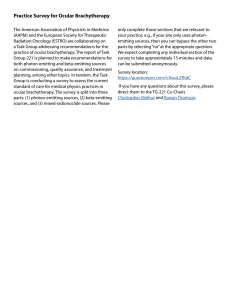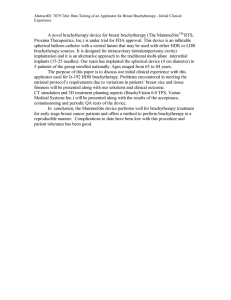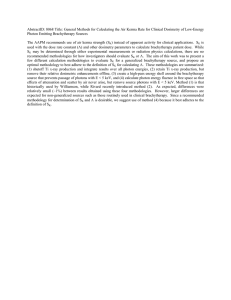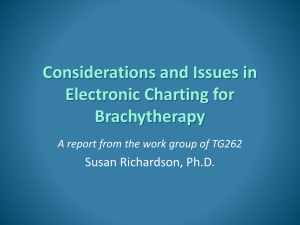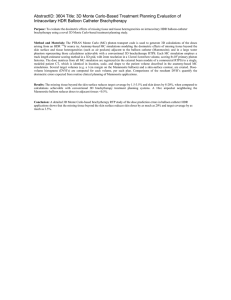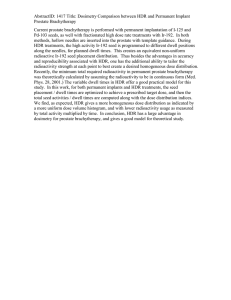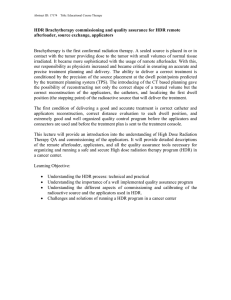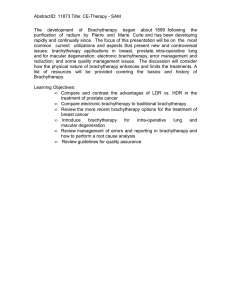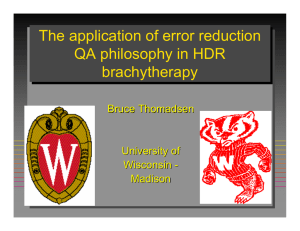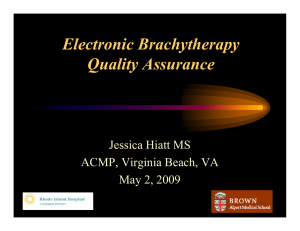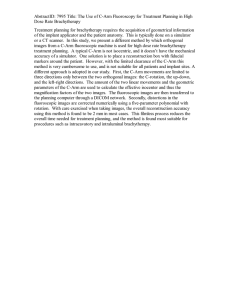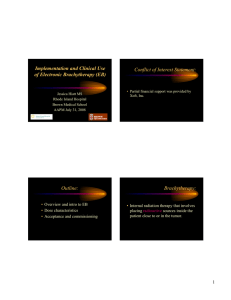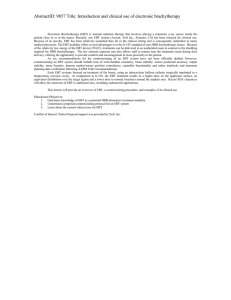AbstractID: 10090 Title: Electronic Brachytherapy QA
advertisement
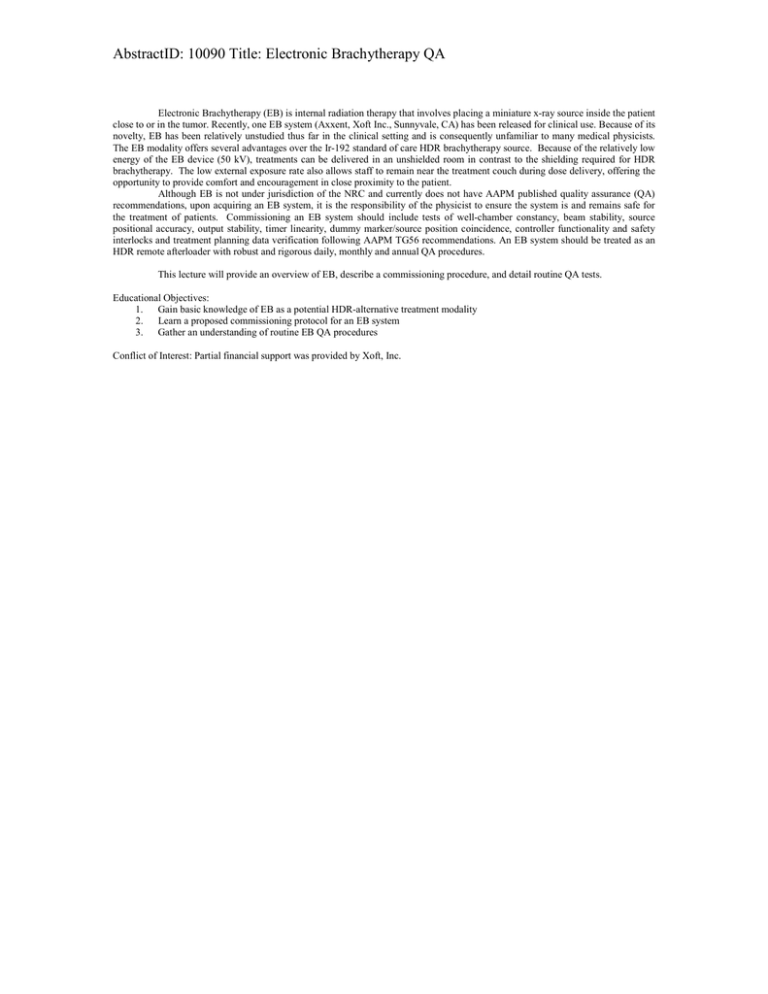
AbstractID: 10090 Title: Electronic Brachytherapy QA Electronic Brachytherapy (EB) is internal radiation therapy that involves placing a miniature x-ray source inside the patient close to or in the tumor. Recently, one EB system (Axxent, Xoft Inc., Sunnyvale, CA) has been released for clinical use. Because of its novelty, EB has been relatively unstudied thus far in the clinical setting and is consequently unfamiliar to many medical physicists. The EB modality offers several advantages over the Ir-192 standard of care HDR brachytherapy source. Because of the relatively low energy of the EB device (50 kV), treatments can be delivered in an unshielded room in contrast to the shielding required for HDR brachytherapy. The low external exposure rate also allows staff to remain near the treatment couch during dose delivery, offering the opportunity to provide comfort and encouragement in close proximity to the patient. Although EB is not under jurisdiction of the NRC and currently does not have AAPM published quality assurance (QA) recommendations, upon acquiring an EB system, it is the responsibility of the physicist to ensure the system is and remains safe for the treatment of patients. Commissioning an EB system should include tests of well-chamber constancy, beam stability, source positional accuracy, output stability, timer linearity, dummy marker/source position coincidence, controller functionality and safety interlocks and treatment planning data verification following AAPM TG56 recommendations. An EB system should be treated as an HDR remote afterloader with robust and rigorous daily, monthly and annual QA procedures. This lecture will provide an overview of EB, describe a commissioning procedure, and detail routine QA tests. Educational Objectives: 1. Gain basic knowledge of EB as a potential HDR-alternative treatment modality 2. Learn a proposed commissioning protocol for an EB system 3. Gather an understanding of routine EB QA procedures Conflict of Interest: Partial financial support was provided by Xoft, Inc.
